
by Ace Concierge | Virtual Assistant | Aug 19, 2024 | Customer Service, Sales Systems, Small Business, Technology

A robust sales system is essential, especially for ensuring client satisfaction. In a rapidly changing market, prioritizing the customer experience can lead to better outcomes than increasing your sales staff. The onboarding of new employees can be time-consuming and expensive due to the recruiting and training involved. Instead, by creating a well-defined sales process, your current team can operate more effectively and achieve more, fostering growth without needing extra personnel.
By designing a smooth experience for your clients, you’re not just offering a product but cultivating a relationship that builds trust and loyalty. This strategy boosts customer satisfaction and raises the chances that they will return and recommend you to others. A strong sales system emphasizing client relationships allows your team to provide consistent, high-quality service, setting the stage for sustainable growth and success.
Now, let’s delve into seven key steps to help you create a sales system that promotes growth and empowers your team.
Create Your Sales Workflow
Let’s kick things off by defining your sales process. Think of it as the backbone of your sales strategy—a roadmap that guides your team from the first point of contact with a lead to closing the deal. By clearly outlining each stage, such as prospecting, qualifying leads, presenting solutions, addressing concerns, and closing, you create a structured approach that everyone can follow.
- Key Takeaways:
- Map out each stage of your sales process for clarity.
- Identify potential bottlenecks and areas for improvement.
- Ensure everyone on the team understands their role in the process.
Discover Your Dream Customer Profile
Understanding your ideal customer is crucial to any sales strategy. I know it can be tempting to try to sell to everyone, but focusing on your target audience is critical. Take the time to create detailed buyer personas that capture your ideal customer’s demographics, behaviors, and pain points.
- Key Takeaways:
- Conduct surveys or interviews to gather insights about your customers.
- Use data analytics to refine your understanding of customer behaviors.
- Tailor your messaging and sales approach to meet the specific needs of your ideal customer.
Establish Specific Goals
Setting clear goals is essential for guiding your sales team. I encourage you to use the SMART framework—specific, measurable, achievable, relevant, and time-bound goals. Clear goals provide direction and motivation, helping your team focus on achieving tangible results.
- Key Takeaways:
- Break down larger goals into smaller, actionable tasks.
- Involve your team in the goal-setting process to foster ownership.
- Regularly review and adjust goals based on performance and market conditions.
Pick the Best Tools for the Job
Having the right tools can significantly improve your sales process. Consider investing in a CRM system, sales automation software, technology integrations, or analytics platforms.
- Key Takeaways:
- Research and choose tools that integrate well with your existing systems.
- Provide training on how to use these tools effectively.
- Regularly evaluate the effectiveness of your tools and make adjustments as needed.
Cultivate Your Team’s Talents
Your sales team is at the heart of your sales system, and investing in their development is crucial. Provide ongoing training and support to ensure they have the skills and knowledge needed to succeed.
- Key Takeaways:
- Schedule regular training sessions to keep skills sharp and knowledge current.
- Encourage peer-to-peer learning and mentorship within the team.
- Celebrate achievements and milestones to boost morale.
Monitor Performance
Monitoring performance is essential for assessing the effectiveness of your sales system. Regularly track and analyze sales metrics like conversion rates, average deal size, and sales cycle length.
- Key Takeaways:
- Create a dashboard to visualize key metrics for easy tracking.
- Hold regular performance review meetings to discuss insights and strategies.
- Use feedback to make informed decisions and adjustments to your sales process.
Iterate and Improve
Finally, embrace the concept of continuous improvement. The sales landscape constantly changes, and your sales process should be ready to pivot and adapt.
- Key Takeaways:
- Foster a culture of open communication where feedback is welcomed.
- Implement small, incremental changes based on performance data and team feedback.
- Stay informed about industry trends and adapt your strategies accordingly.
Building a solid sales system is a total game changer for your business, transforming how you engage with customers and hit your targets. By following these strategic steps, you lay the foundation for a sales system that’s both adaptable and effective. It’s not just about driving growth; it’s about creating a sales culture that inspires your team and resonates with your customers. Embrace these concepts, and watch your sales process evolve into a powerhouse of efficiency and success.
You’ve got the tools and strategies to thrive—so go for it and reach your goals!
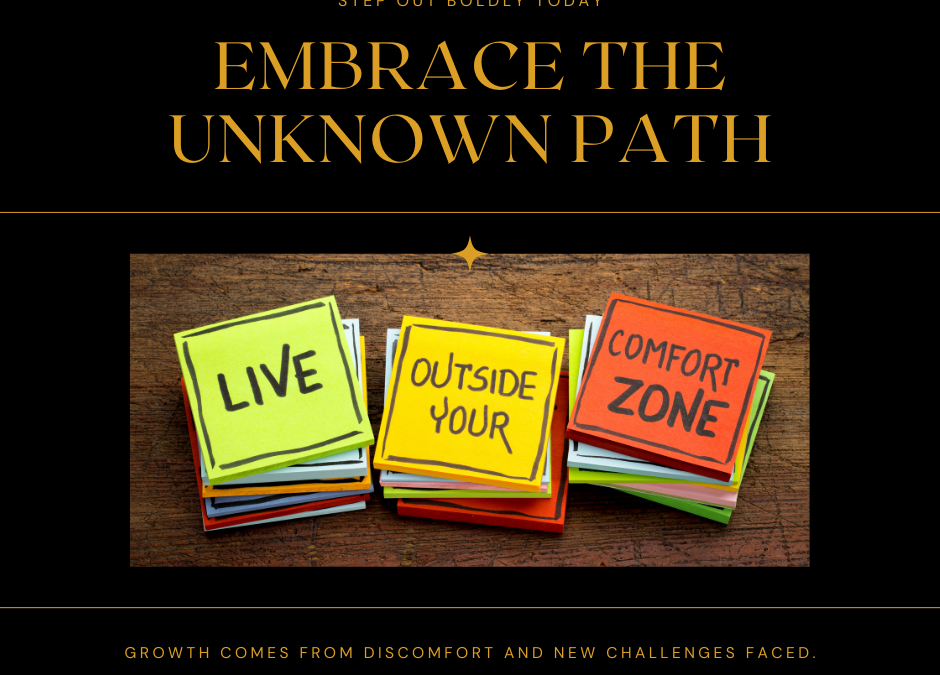
by Ace Concierge | Virtual Assistant | Jul 1, 2024 | Business Transformation, Leadership
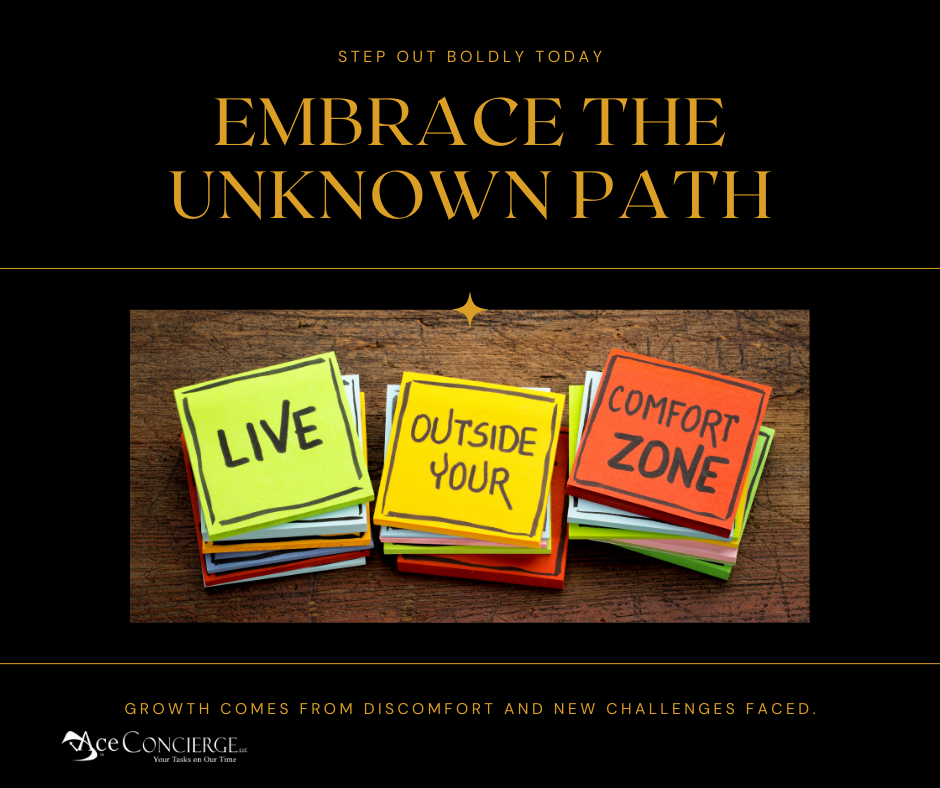
We’ve all heard the phrase “get out of your comfort zone” so many times that it’s almost become a cliché. But there’s a reason this advice persists—it works.
Let me take you back to a sunny afternoon when I was just five years old. I’d been invited to a birthday party, and for an entire week, it was all I could talk about. The day finally arrived, and there I was, dolled up in my best party dress and shiny patent leather shoes, skipping down the street with a wrapped present in hand. But as I approached the house and saw the crowd of people, something inside me froze. In a moment of panic, I threw the gift over the fence and ran home as fast as my little legs could carry me.
Fast-forward to today, and you might be surprised to find me in a very different scenario. Picture this: It’s 6:45 a.m., and I’m making my way to the beach. But I’m not there for a leisurely stroll or a quiet moment of reflection. No, I’m headed to a bootcamp class that starts at 7 a.m. sharp.
I used to avoid group exercise like the plague! Stepping out of my comfort zone was a must. I craved more discipline, structure, and commitment in my fitness journey. It was time to elevate my game, embrace change, and work on healing my long-term injuries.
When I first heard about this bootcamp, every fiber of my being screamed, “No way!” It was quite literally the last thing I ever wanted to do. But something inside me, perhaps that same little girl who once wanted so badly to go to that party, whispered, “What if?”
So, I took a deep breath and signed up. That first morning, as I stood on the beach with a group of strangers, I felt that same urge to run away. But this time, I stayed. And let me tell you, it was the best decision I’ve made in a long time.
As I reflect on this journey, I can’t help but think about that little girl who threw the present over the fence. I wish I could go back and tell her that the joy and growth she seeks are on the other side of that fence, in the midst of those intimidating group activities.
But perhaps it’s better this way. Perhaps we all need to take our own journey from fence-throwing to beach bootcamps, whatever form that might take in our lives. When we finally gather the courage to step out of our comfort zones, we often find that’s where the real magic happens.
This injury-prone introvert now loves group sweat sessions.
What is a comfort zone?
It’s that cozy mental space where you feel safe, in control, and free from anxiety. Sounds nice, right? But here’s the catch—while it feels good, staying there can seriously limit your growth and success.
Think about it. Every significant breakthrough in your life probably came when you did something that scared you a little (or a lot). Maybe it was speaking up in a meeting (my college senior thesis was Fear of Public Speaking), pitching a new idea to a client, or even starting your own business. These moments of discomfort are where the magic happens.
But why exactly does leaving your comfort zone lead to success?
- Goal Achievement: Let’s face it, not everything worth doing is easy. By stepping into your “growth zone,” you’re setting yourself up to accomplish more and reach those ambitious targets you’ve set for yourself.
- Increased Confidence: There’s nothing quite like the feeling of accomplishing something you weren’t sure you could do. This boost in self-assurance can create a positive cycle, encouraging you to take on even more significant challenges.
- Expanded Horizons: Trying new things often leads to meeting new people, discovering new interests, and gaining fresh perspectives. This broader worldview can be invaluable in business, sparking innovative ideas and helping you connect with diverse clients and colleagues.
- Resilience: Each time you face a challenge and come out the other side, you’re building your ability to handle stress and uncertainty. In the ever-changing business world, this resilience is a crucial asset.
- Personal Empowerment: By regularly pushing your boundaries, you gain a better understanding of yourself and more control over your life’s direction. This self-awareness can help you make better decisions and align your actions with your long-term goals.
Now, I know what you’re thinking. “This all sounds great, but how do I actually do it?”
- Set Clear Goals: Choose something specific that is just outside your current abilities. Maybe it’s giving a presentation to a large audience or exploring the intricacies of AI.
- Break it Down: Divide your goal into smaller, manageable steps. This will make the process less overwhelming and allow you to build momentum.
- Embrace Discomfort: Remember, feeling a bit uncomfortable is a sign you’re growing. As Tony Robbins says, “It’s not what we do once in a while that shapes our lives. It’s what we do consistently.”
- Celebrate Milestones: Acknowledge your progress along the way. This positive reinforcement can help keep you motivated.
- Reflect and Adjust: Regularly assess how you’re feeling. If tasks seem too easy, you might need to push a bit harder. If you’re constantly overwhelmed, you may need to dial it back a notch.
It’s important to note that leaving your comfort zone doesn’t mean constantly pushing yourself to the brink. It’s about finding that sweet spot – what psychologists call the “optimal anxiety” level – where you’re challenged enough to grow but not so stressed that you shut down.
This journey from a fence-throwing five-year-old to a beach bootcamp enthusiast isn’t just about physical fitness. It’s about pushing boundaries, facing fears, and discovering strengths you never knew you had. It’s about realizing that growth often lies just outside our comfort zone.
So, here’s my challenge to you:
What’s your “beach bootcamp”? What’s that thing you’ve been avoiding, that opportunity you’ve been too scared to seize?
Maybe it’s time to take a deep breath, lace up your shoes (party or otherwise), and step out onto your own beach.
Trust me, the view from here is worth it.
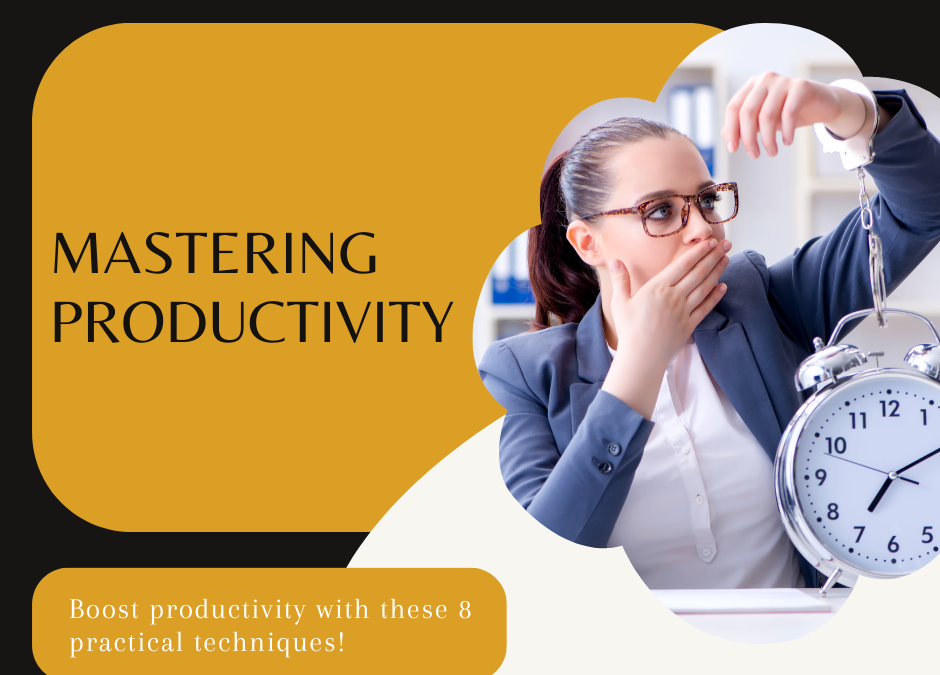
by Ace Concierge | Virtual Assistant | May 22, 2024 | Productivity
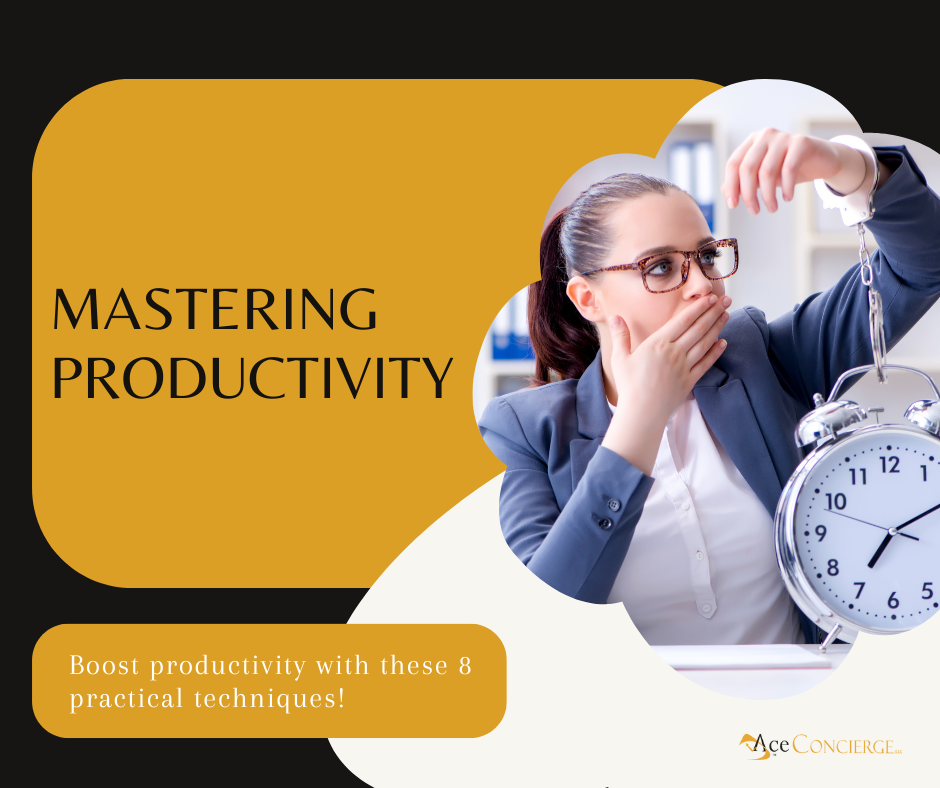
In a world where time is our most valuable resource, mastering productivity is the key to unlocking our full potential.
We all face moments when we struggle to get things done when procrastination creeps in, and when the to-do list seems endless. Whether you’re a busy professional, a student juggling multiple responsibilities, or an entrepreneur trying to grow your business, maximizing your productivity can make all the difference in your success and well-being.
From Eat the Frog to the Eisenhower Matrix, many techniques exist to help us achieve more in less time. This guide will explore some of the most effective productivity methods, strategies, and tips to help you supercharge your efficiency and accomplish your goals.
Productivity Techniques
Embrace the Challenge: Eat the Frog
Ever wake up to a mountain of tasks, feeling overwhelmed before the day even begins? You’re not alone. Brian Tracy’s “Eat the Frog” method urges us to tackle the most challenging task first thing in the morning. By confronting the beast head-on, we kickstart our day with a sense of accomplishment, setting the tone for a productive day ahead.
As author Brian Tracy explains, “If the first thing you do each morning is to eat a live frog, you can go through the day with the satisfaction of knowing that that is probably the worst thing that is going to happen to you all day long.”
Seize the Moment: The 2-Minute Rule
David Allen’s “2-Minute Rule” is a lifesaver when tiny tasks threaten to snowball into a mountain of to-dos. If it takes less than two minutes, do it now. This simple rule prevents small tasks from cluttering your mental space, freeing you to focus on the bigger picture.
Work Smarter, Not Harder: Pomodoro Technique
Francesco Cirillo’s Pomodoro Technique revolutionizes the way we approach work. We maintain concentration and ward off burnout by breaking tasks into focused 25-minute intervals, followed by short breaks. It’s a gentle reminder that productivity isn’t about working harder but working smarter.
Stay the Course: 3/3/3 Method
In the whirlwind of daily tasks, losing sight of long-term goals is easy. The “3/3/3 Method” keeps us grounded, ensuring we allocate time to daily, weekly, and monthly priorities. By balancing short-term needs with long-term aspirations, we pave the way for sustained success.
Navigate with Clarity: Eisenhower Matrix
Dwight D. Eisenhower’s Matrix offers a roadmap for navigating the maze of tasks and priorities. By categorizing tasks based on urgency and importance, we clarify where to focus our efforts. It’s a powerful tool for cutting through the noise and zeroing in on what truly matters.
Seize Your Time: Time Blocking
Time blocking is the antidote to scattered focus and endless distractions. We create pockets of uninterrupted focus by carving out dedicated blocks of time for specific tasks. Reclaiming our time and channeling it towards meaningful work is a deliberate choice.
Amplify Your Impact: Pareto Principle
Vilfredo Pareto’s Principle reminds us that not all tasks are created equal. We maximize our impact and minimize wasted effort by identifying the tasks that yield the most significant results. It’s a guiding principle for prioritizing our efforts and achieving more with less.
Leap into Action: 5-Second Rule
Mel Robbins’ 5-Second Rule is a call to action in the face of hesitation. When in doubt, count down from five and leap. It’s a powerful reminder that action conquers fear and inertia, propelling us toward our goals with unstoppable momentum.
Additional Strategies for Success
- Batch Similar Tasks: Streamline your workflow by tackling similar tasks together, minimizing context switching and maximizing efficiency.
- Focus on Outcomes: Don’t just aim for busyness; strive for impact. Focus on tasks that move the needle and align with your overarching goals.
- Delegate and Outsource: Recognize when to enlist help and delegate tasks outside your genius zone, freeing up your time for high-value activities.
- Take Regular Breaks: Honor your body’s need for rest and rejuvenation by taking regular breaks throughout the day, refreshing your mind and preventing burnout.
- Eliminate Distractions: Create a conducive work environment by minimizing distractions such as notifications, social media, and unnecessary meetings.
As productivity expert Stephen Covey wisely advises, “The key is not to prioritize what’s on your schedule, but to schedule your priorities.” By integrating these proven strategies into your daily routine, you can unlock your productivity potential and chart a course toward success in your personal and professional endeavors.
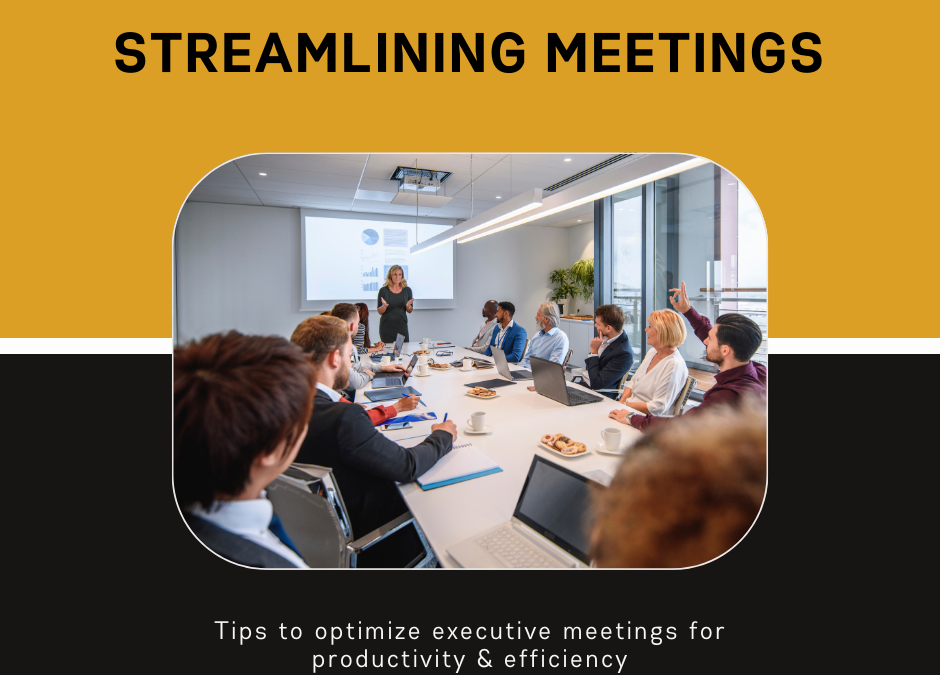
by Ace Concierge | Virtual Assistant | May 14, 2024 | Leadership, Small Business, Time Management
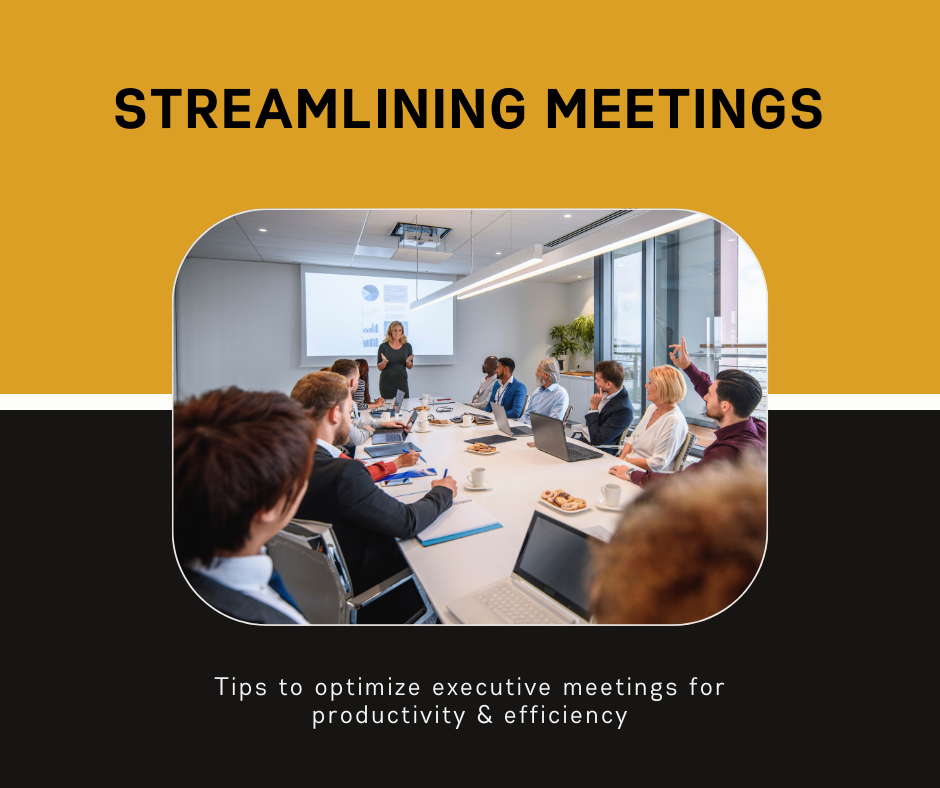
As a business owner or executive, you are likely familiar with the exhausting meeting marathon. It seems like every day is jam-packed with back-to-back gatherings, each promising to make progress on your most urgent priorities. However, more often than not, you come out of these meetings feeling dissatisfied, unproductive, and questioning where all the time has gone. You are not alone in this struggle. Research shows executives spend an average of nearly 23 hours weekly in meetings, with little to show. A significant 71% of senior managers view meetings as unproductive and inefficient.
So, what is the solution to streamline your meeting schedule and ensure that each gathering is a productive use of your precious time? Let’s dive in.
The Productivity Pitfalls of Inefficient Meetings
Enhancing meeting productivity requires addressing the common obstacles that impede their success. A primary concern is unclear objectives and agendas, which lead to unstructured discussions and distractions. Moreover, inadequate meeting management can result in disorganized debates and lengthy updates. The prevalence of multitasking and the overwhelming frequency of meetings also hinder productivity in the modern workplace.
Strategies for Efficient, Focused Meetings
Now that we’ve identified the common pitfalls, let’s explore some proven strategies for streamlining your meeting schedule and maximizing the productivity of each gathering.
1. Define Clear Objectives and Agendas
The old saying goes, “If you fail to plan, you plan to fail.” Before scheduling a meeting, clearly define the purpose, desired outcomes, and critical discussion points. Distribute a detailed agenda in advance so participants can come prepared and ready to contribute.
2. Designate a Facilitator
Appoint a meeting facilitator whose sole job is keeping the discussion on track, managing the time, and ensuring all attendees can voice their perspectives. This person should be empowered to politely redirect the conversation if it starts to veer off course.
3. Limit Attendees
Resist the temptation to invite everyone and their brother to your meetings. Only include the essential decision-makers and subject matter experts who need to be there. As leadership coach Cameron Herold advises, “If you have more than seven people in a meeting, you’re wasting time.”
4. Leverage Technology
Take advantage of the wealth of productivity-boosting tools at your fingertips. Virtual meeting platforms, collaboration tools, and productivity software can all boost meeting efficiency and engagement. Platforms like Zoom, Google Meet, Microsoft Teams, and Switchboard facilitate remote meetings with features like HD video, screen sharing, and real-time messaging. Project management and note-taking apps help track action items, decisions, and follow-ups. Meanwhile, virtual whiteboards and collaboration software enable more dynamic, interactive discussions.
5. Set Time Limits
Resist the urge to schedule hour-long meetings by default. Instead, aim for shorter, more focused gatherings of 30 minutes or less. If the agenda requires more time, break it into a series of back-to-back sessions with clear start and end times.
6. Follow Up Promptly
Don’t let the momentum of a productive meeting fizzle out. Immediately after the gathering, share a concise summary of key takeaways, action items, and next steps. This ensures everyone is on the same page and accountable for their responsibilities. Implementing these strategies can transform your meeting schedule from a time-sucking slog to a streamlined, high-impact part of your workday.
Maximize Meeting Productivity
Meeting optimization is a topic that can’t be overlooked without exploring the different tools and techniques that can enhance productivity. One effective method is the “stand-up” or “scrum” meeting format, where participants stand throughout the gathering. This promotes brevity, focus, and a sense of urgency. Research has shown that stand-up meetings can be up to 34% shorter than meetings where participants are seated.
Another helpful tactic is the “parking lot” technique, where topics that stray from the agenda are promptly noted and addressed separately rather than derailing the ongoing discussion.
Are you ready to revolutionize your meeting schedule from a dreaded obligation to a valuable productivity tool?
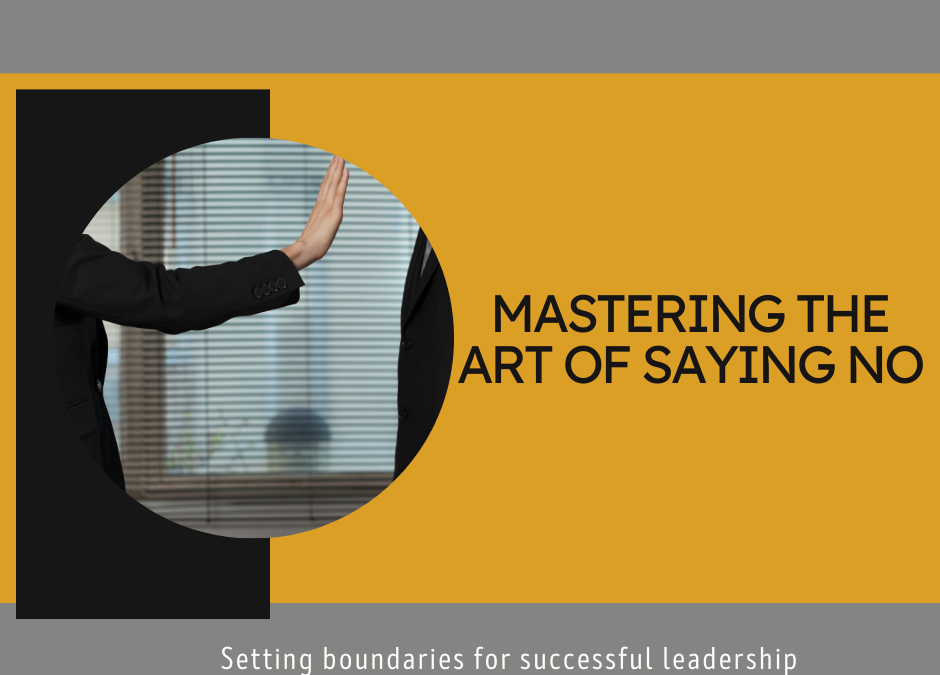
by Ace Concierge | Virtual Assistant | May 8, 2024 | Business Transformation, Communication, Leadership
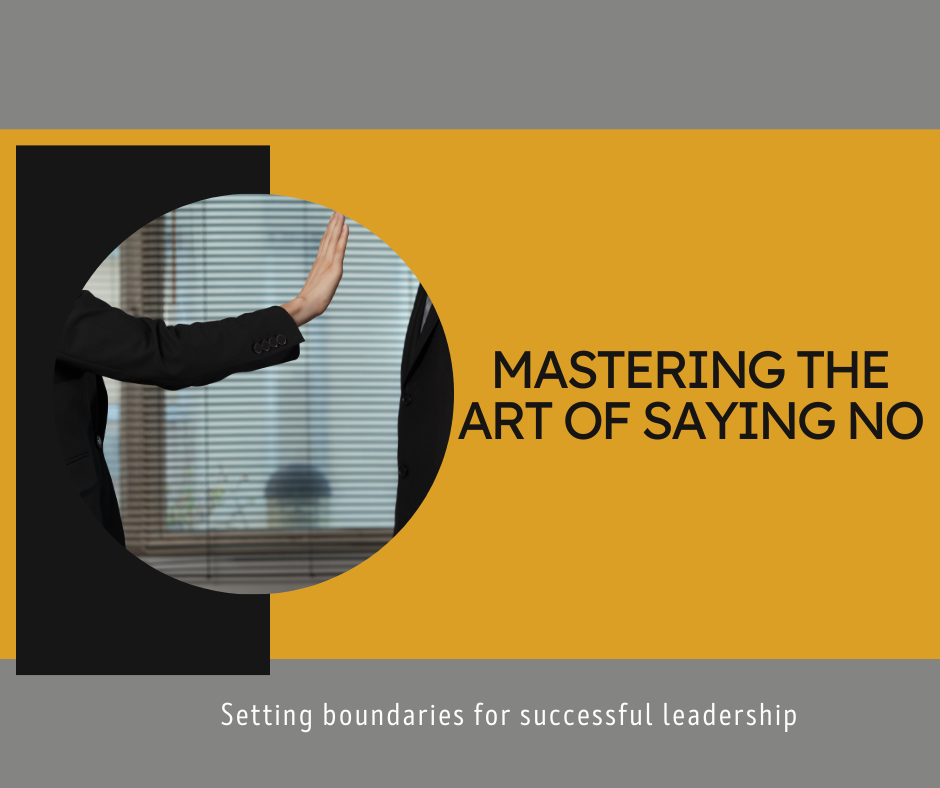
As a business leader with a hectic schedule, your time is valuable and constantly sought after. Balancing client demands, team projects, and industry obligations can be overwhelming. Failing to establish boundaries and turning down opportunities can result in burnout, reduced efficiency, and a loss of focus on key objectives. Learning to say no is crucial for executives and entrepreneurs looking to regain control of their time and resources. This article will delve into the significance of setting limits, offer tips on politely declining requests, and highlight the advantages of saying no.
The Importance of Setting Boundaries
In today’s always-on, hyper-connected business landscape, it’s easy to feel you need to be available 24/7. The fear of missing out or letting someone down can make turning down opportunities or requests challenging. However, failing to set clear boundaries can severely affect your well-being and your ability to lead effectively.
When you say yes to everything, you spread yourself too thin, leaving little time and energy for the essential tasks and strategic priorities. This can lead to increased stress, diminished focus, and a sense of being overwhelmed and unfulfilled. Ultimately, your productivity, decision-making, and leadership capabilities suffer. According to a survey by the American Psychological Association, 75% of adults reported experiencing moderate to high levels of stress in the past month, with work being a significant contributor. By learning to say no, you can help mitigate the negative impacts of chronic stress and burnout.
Techniques for Politely Declining Requests
Saying no doesn’t have to be aggressive or damaging to your relationships. The right approach can strengthen your professional standing and demonstrate your leadership abilities. Here are some techniques for politely and professionally declining requests:
- Respond Promptly: Don’t leave requests hanging. Acknowledge the request and promptly respond, even if it’s a polite decline. This shows respect for the other person’s time and prevents the situation from dragging on.
- State Your Decision: When declining a request, respond directly and confidently. You do not need to provide a lengthy explanation. A simple statement like “I won’t be able to take this on, but thank you for thinking of me” is sufficient.
- Suggest Alternatives: If appropriate, offer an alternative solution or suggest someone else who may be better suited to the task. This demonstrates that you’re trying to be helpful, even if you can’t directly assist.
- Express Gratitude: Thank the person for the opportunity and let them know you appreciate being considered. This helps maintain a positive relationship, even if you decline the request.
The Benefits of Saying No
Mastering the art of saying no may initially feel uncomfortable, but the benefits far outweigh the short-term discomfort. Here are some of the ways that learning to decline requests can positively impact your business and your life:
- Increased Productivity: You free up time and mental energy to focus on your most critical strategic objectives by saying no to low-priority tasks and commitments. This allows you to be more productive and achieve more significant results.
- Reduced Stress and Burnout: Overcommitting yourself is a surefire path to burnout. According to a study by the World Health Organization, burnout is characterized by feelings of energy depletion, increased mental distance from one’s job, and reduced professional efficacy. Saying no helps you maintain a healthier work-life balance, reduce stress, and avoid the negative impacts of chronic overwhelm.
- Improved Decision-Making: When you’re not stretched thin, you can make better-informed, more thoughtful decisions. This leads to more effective leadership and better outcomes for your business.
By mastering the art of saying no, you can control your time and energy and align your commitments with your highest priorities. This, in turn, can boost your productivity, reduce stress, and make you a more focused, impactful leader.
You have to decide what your highest priorities are and have the courage pleasantly, smilingly, and non-apologetically – to say no to other things. And the way to do that is by having a bigger yes burning inside. Stephen Covey










